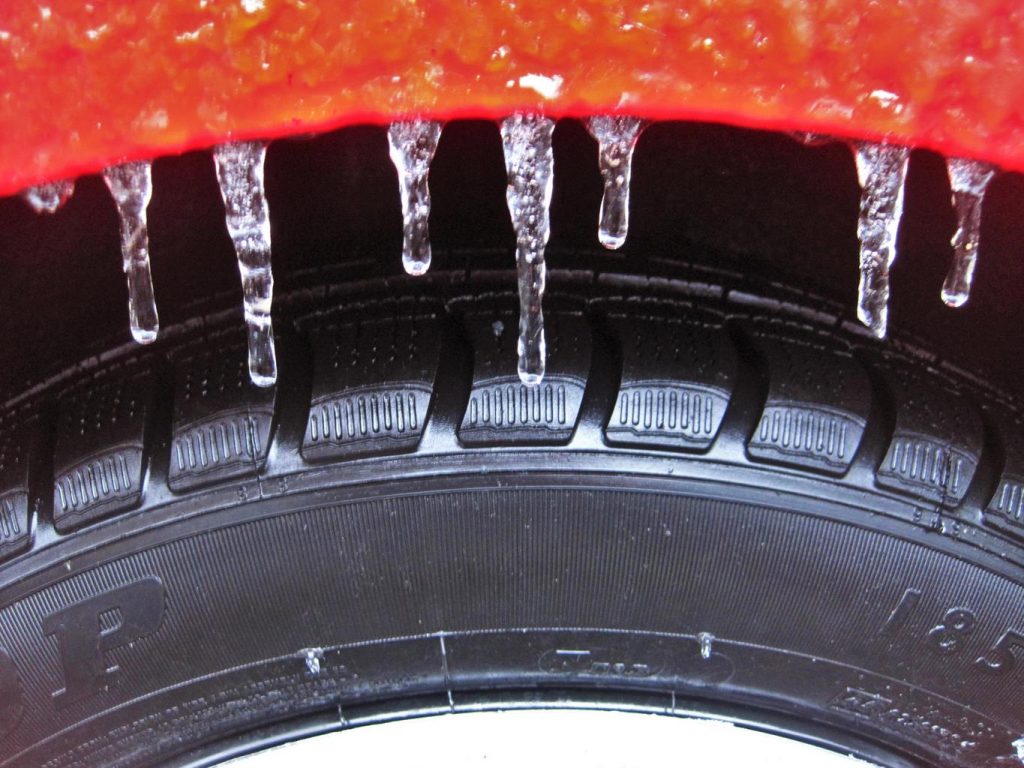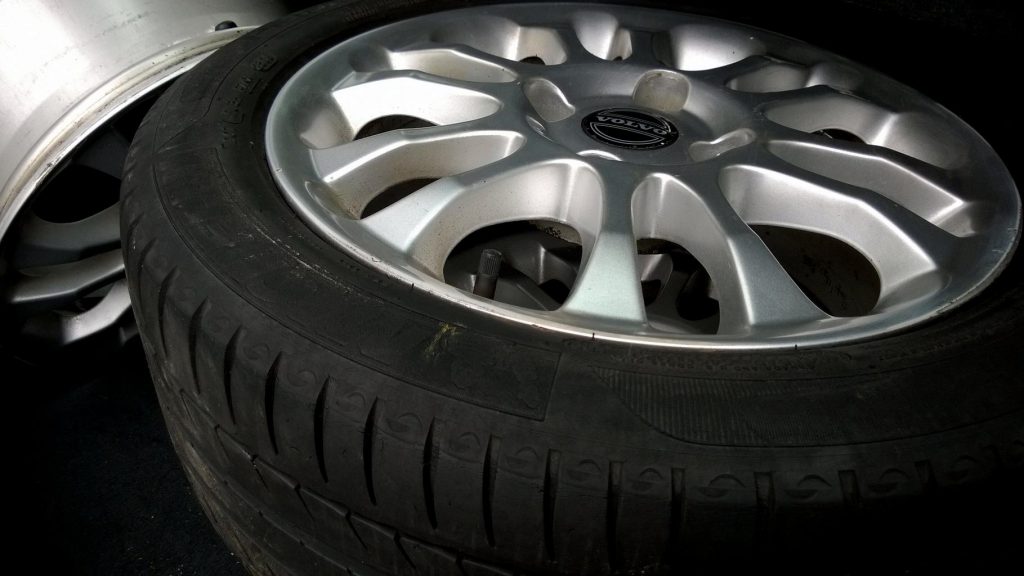Some people may have the misconception that winter tires are tires needed to drive through deep snow, and that they are wrapped in snow chains. Snow chains are widely used, but they are not the only “winter tires”.
When you live in an area or country with extreme weather conditions, it would be wise to know the difference between summer and winter tires. Even though they look much alike, there are a few differences. Some of these differences are visual and some are not.
The main difference between summer and winter tires are the rubber compound they are made of and the different treading on the outside of these tires. The rubber compounds are temperature sensitive, in order to deal with the extreme cold.
Some people might be using summer or winter tires all year round and unaware that their car’s performance is handicapped, or you might be mixing summer and winter tires. One way of making sure which tires you have is to check on the sidewall of the tire. Mixing summer and winter tires in the UK and US is not illegal, unlike Europe but it is not advisable.
Winter tires have a ‘snowflake on a mountain’ sign on them. In countries like Finland, Sweden, Austria, Germany and many more it is mandatory to drive with winter tires during winter time.
Winter tires

If you live in a really cold area where temperatures reach freezing point regularly during winter time, the chances that you have 2 sets of tires are good. One for summer and one for winter.
Winter Tire Compound;
These tires use a rubber compound that functions best when temperatures fall below 7 degrees Celsius (46 Fahrenheit). Winter tires are made so that they don’t get hard and brittle and are more resilient with freezing temperatures. For this reason they still keep their ability to have good traction in these conditions. The rubber compound they use is also softer compared to summer tires, this is because the rubber content is higher in winter tires.
Winter Tire Tread;
These tires have a more prominent and rough tread pattern than their summer counterparts. They have smaller tread blocks, but tread depth runs deeper. New tires have a tread depth of between 8 and 9 mm (approx. 5/16 inch). Snow will get stuck and compress in these deep grooves, when snow from the tire connects with snow on the road they grip each other for better traction., who would have thought? As your tires get worn it should not go below 4mm (5/32 inch). If it does, your car’s handling and stopping distance would suffer greatly. Winter tires should be replaced when it reaches 4mm of tread depth.
Winter Tire Sipes;
Winter tires have more sipes in their design.
So what are “Sipes” on a tire? Sipes are little cuts in the tread design that goes across the tire. The sipes further increase the tire’s traction on icy, snowy or muddy roads. In rainy weather they also dispel water on the road surface better and lessen the chance of aquaplaning.
Summer Tires

When you buy a new car, it comes fitted with summer tires, and these tires are part of the original package for the car. These tires are the safest in milder temperatures. They perform best above 7 degrees Celsius and can tolerate extreme temperatures without being permanently damaged. They are designed to have maximum performance in hot, dry and even wet weather.
Summer Tire Compound;
Summer tires use a different rubber compound than winter tires which help them not become overly soft in extreme temperatures. They are harder than winter tires, but not too hard to ensure a smooth ride. They actually require to heat up and soften the tire a bit so it can grip the road better for better performance in general. You can see this with formula 1 racing where they turn the car side to side before they race to heat up the tires for better traction.
Summer Tire Tread;
They have a much smoother tread pattern with less prominent grooves which means they have less rolling resistance and make less noise than winter tires. Their tread blocks are considerably larger and means that there is more rubber in contact with the road and are more streamlined than winter tires.
These tires are designed to have maximum performance including handling, braking distance, fuel consumption, durability, and speed stability when temperatures are above 7 degrees Celsius.
Summer Tire Sipes;
Summer tires have less sipes in the tread, but the tread blocks are designed in a way to lessen the chance of aquaplaning making it safer on wet roads. But remember this is only possible when temperatures are above 7 degrees Celsius. Below that the rubber becomes hard and causes the tire to have a weak grip on the road surface making it dangerous to drive.
Why not just use All Season Tires?

You may think why the hassle of two sets of tires instead of just one? All season tires incorporate both technology from winter tires and summer tires making them ideal for all year weather conditions. They work well in all types of climates, and would work well in the UK where winters are relatively cold.
The problem with these tires is that their performance drops when at freezing temperatures, actually anything below 7 degrees Celsius. Below 7 degrees Celsius they also will harden like summer tires, but their different design helps them perform better than summer tires. That said, at very high mid summer temperatures the summer tires will outperform the all season tires.
When you live in a country that really has extreme temperatures throughout the year all season tires are not recommended, here it is safer to stick with seasonal tires.
Conclusion

The difference between summer and winter tires comes with the different rubber compounds they are made of, making them perform better in certain conditions. The biggest differences in these tires are the rubber compound where winter tires works best below 7 degrees Celsius and summer tires above 7 degrees Celsius. Mixing summer and winter tires is a bad idea for this reason. Your tires will wear much faster potentially damaging the tire, braking distance and handling will also be negatively affected.
Can I use summer tires in winter? Using one set of tires throughout the year where extreme temperatures are observed, your tires may degrade much quicker and even be damaged beyond repair. Using summer tires in the winter will cause the tire to harden and get brittle when it gets too cold. Cracks could occur on the tire where you would be in danger of a blowout eventually. The hardened rubber would also mean less grip on the road increasing your chances of having an accident.
Can I use winter tires in summer? Winter tires on the other hand have a softer rubber compound and driving them on a dry hot road will cause them to become overly soft and would influence your car performance making handling more difficult. These tires could also overheat much quicker than summer tires and could crack and cause a blowout. They would also lose tread much faster than the summer tires, because of the softer rubber.
How much are winter tires? Winter tires are more in the price range of all season tires which are both more expensive than summer tires. Remember winter tires will outperform summer tires during cold winter months. Can you put a price tag on safety?
All season tires are good where summers don’t get too hot and winter temperatures do not exceed freezing point too often. They still harden like summer tires when below 7 degrees Celsius. They are also more expensive than seasonal tires. As we discussed mixing summer tires and winter tires is a bad idea and the same goes with mixing all season tires with summer or winter tires.



